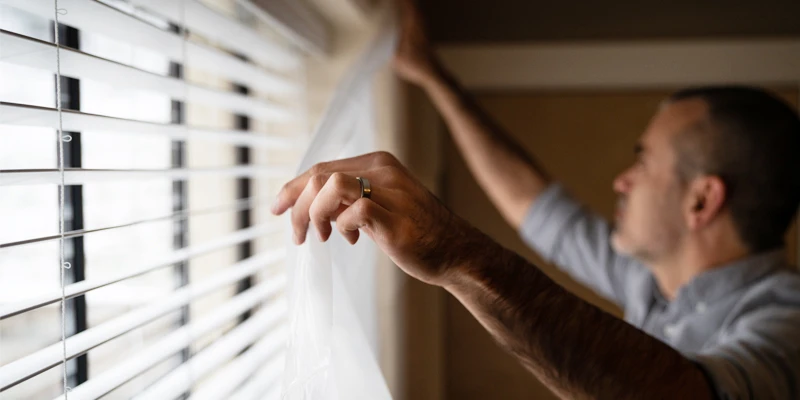
Homeowners across the United States use their basements for so much more than storage, including for additional bedrooms and recreational rooms. But this makes keeping them warm in winter that much more important.
A basement is naturally insulated by the earth that surrounds it—keeping it cool in summer and relatively warm in winter. But this natural insulation isn’t enough to make basements truly comfortable from late fall through the start of summer, especially in northern climates.
If your basement is a little chilly for your liking, below, broken into two categories, are tips for keeping a basement warm 1) by optimizing energy efficiency and 2) by adding new heat sources.
Read on to learn how to make your basement warmer.
How to Keep Your Basement Warm in Winter with Energy Efficiency
Here are the top four methods for keeping a basement warm in winter without spending money on generating additional heat. In general, these options will be less expensive over the long term. Try these tips before considering a major heating infrastructure project, which involve paying higher utility bills every month.
-
Add additional insulation.
Your home’s foundation is likely built of stone or cinder block. In many finished basements, these walls are covered by an interior wall made of drywall or in some cases, paneling. If stone or cinder block walls are visible in your basement, you can create an opportunity for adding insulation by framing-in the basement with drywall. If your basement already has interior walls, it may be possible to add additional spray foam insulation to your basement.
Make sure any basement or egress windows are well insulated, too. Remove the trim around the window to add additional insulation and inspect to make sure there are no gaps. Fill gaps with appropriate insulation.
More questions about insulation? Contact your local Aire Serv technician for a consultation.
-
Clean and seal any leaks or cracks in the foundation, floors, and walls.
Cracks in the interior or exterior of your home’s foundation should be sealed to prevent cool air from seeping into your home. Carefully seal any openings using caulk appropriate to the building material you’re repairing.
-
Replace existing windows or walkout doors with energy-efficient varieties.
Depending on the age of your basement windows, they may be single-pane or have damaged or broken seals. Replacing your basement’s existing windows and walkout doors with double pane or otherwise more energy-efficient varieties can make a noticeable difference in comfort. For maximum insulation, install thermal window curtains on all windows and exterior doors.
-
Add floor rugs or install wall-to-wall carpet or flooring.
Many unfinished basements have cold, concrete slab floors. At minimum, laying throw rugs over trafficked areas will keep feet warm and help to insulate the floor from the cold. For additional insulation, consider installing wall-to-wall carpet or engineered flooring.
Before investing in a high-quality floor covering, consider how dry your basement stays. If your basement floods regularly, resolve that issue first before installing carpet.
How to Heat a Basement in Winter
Physically heating a cool basement is a bigger task, as it usually requires infrastructure improvements to be made to the space, including the addition of ductwork or a heat source. The four heat-adding options below will make your basement physically warmer.
-
Install additional heat vents in the basement.
This method can solve your cold basement issue but depending on the design of your home and the type of heating system you have, this can be a significant investment in time and money. Consult an HVAC professional to determine if this is possible in your space.
-
Install a heated floor.
Basement floor heating, or radiant heat, is a system that uses electrical wiring or circulating hot water beneath a floor to warm the cement. Warmth rising from the heating elements makes the cement floor a much more pleasant temperature. Installing a radiant heating system in new construction is a no-brainer, but retrofitting an existing basement is not as simple. In many cases, the cement floor must be removed and re-poured to accommodate the tubing.
-
Install an additional basement-specific heating system.
Additional basement-specific heating options include everything from electric baseboard heaters to a wood pellet stove. These are all good options, but homeowners should consider these options carefully as they all have their quirks. A wood pellet stove, for example, requires homeowners to haul wood pellets to their basement, which typically come in 40-pound bags.
-
Use an electric space heater.
Maybe you only need additional heat in your basement for a single renovated room or only for certain times, days, or weeks. Investing in a high-quality space heater is a fantastic way to heat your space without busting your budget, but remember, if you rely on it a lot, you will notice the difference on your electric bill. For that reason, it’s not an ideal everyday solution. To avoid fire dangers, always use the electric space heater according to the manufacturer’s instructions and always turn off and unplug the unit when leaving the room. Learn more about space heater safety.
Keep Your Basement Toasty Warm with Help from Aire Serv
From ductwork installation to heat pump maintenance and everything in between, Aire Serv technicians are ready to handle all your HVAC needs. Our local technicians are like EMTs for your HVAC system, available 24/7 for emergency service. Breathe easy, with help from Aire Serv. Schedule an appointment online or contact your local Aire Serv.

